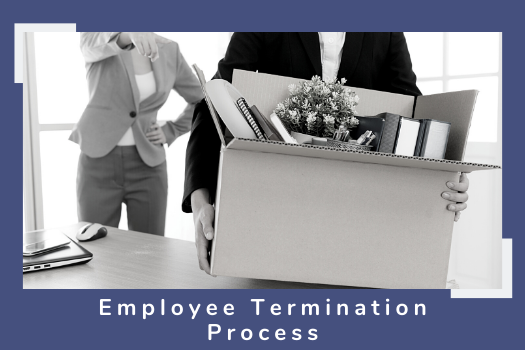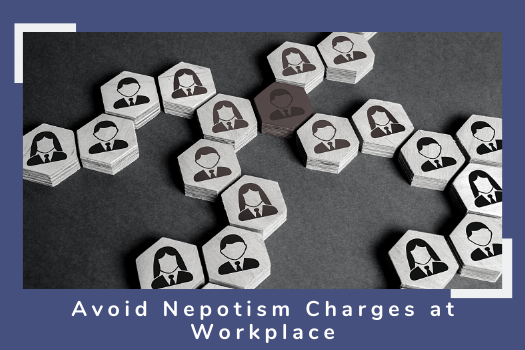The Divorce - Employment Termination Process
Employee Engagement, Employee Relations, Rewards and Recognition
Hiring an employee is a positive experience for any HR personnel, but terminating any employee is almost a nightmare for most. Whether an employee is fired due to economic reasons, or low productivity or misconduct, a proper termination protocol needs to be followed to prevent additional hassles. In the worst-case scenario, any improper termination step may lead to a court case. In my experience, as HR personnel, termination can be daunting as well as positive.
I will now share two separate cases that I handled during my career.
In the first case, I was asked to investigate an employee who was involved in gross negligence that cost the company a huge loss. Upon investigation, I found that the employee had not only been negligent, his work record showed that his performance had been failing on the growth curve. The performance review conducted for the last two quarters showed no progress and the employee refused to make any amendments to his work ethics. The problem, in this case, was that the employee was related to a board member and was encashing his status to become laid-back at work. He was negatively impacting the morale of other sincere and hard-working employees. His manager wanted to create a water-tight case that could be presented before the board. Other employees also corroborated the lack of work ethics and camaraderie in the said employee. He was becoming a white elephant for the organization. After a thorough review of the evidence and testimony, a decision was made and the said employee was to be terminated for the lack of work ethics and gross negligence.
I decided on the termination meeting plan, which was simple and straightforward: meet in the conference room, inform the employee of the termination and go ahead with customary items within the company’s termination policy. Along with the employee, the manager and I would be present in the meeting room. Unfortunately, once I finished explaining the process of termination, the employee became unhinged. He started screaming and yelling with threats that he would ensure that I would repent for my decision. In a fit of anger, the manager announced that the employee’s service was terminated and the meeting was over. I took over and let the employee calm down. I realized that the employee could twist the tale and the company could wind up with a lawsuit. In fact, the termination would become an issue of contention between board members, causing unrest in the organization. The newly fired employee had to be dealt with extreme caution. I explained to the employee his performance reviews, his growth curve, testimonials from other employees that led us to make this decision. I also informed the severance package in detail, where we would be providing the employee a severance sum apart from his due salary. I also assured that we will not be blacklisting the employee despite causing a loss in company turnover. Once he began to settle down, I convinced him to sign the severance agreement after discussing the severance agreement in great detail, which mentioned that he forfeits his rights to take legal action against the employer. I also ensured that he signed it without feeling any pressure. In doing so, I averted the legal hassle as well as a possible point of contention between the board members.
I realized, in this case, that the employee had a desire to quit the company for reasons not divulged by the employee but did not want to be terminated without a decent severance package. With this termination, I realized a few things. Termination meetings can be an emotionally charged situation. The meetings, which should not have duration of more than 10-15 minutes, should be carefully planned. For every termination meeting, HR needs to go prepared with all the documentation and explain the termination process in detail. A manager should be present, apart from the HR representative, during the entire process to provide a witness, in case the meeting takes a twist and gets violent. If the employee becomes emotional or aggressive, remember to remain calm even if the manager loses his/her temper. As an HR, the ability to remain calm becomes paramount. Diffusing a tense situation becomes the need of the moment, as emotions are running high on both sides. A capable HR should ensure that the situation does not go out of hand and should not take a legal/lawsuit course.
The next case is a more positive one, perhaps a dream termination meeting. The employee in question had been facing some personal problems. His work was getting impacted due to some personal problems. In my opinion, he needed a considerable time off to settle his personal issues. Since work, in general, was getting impacted and other employees also felt restless, the management and the HR teams took a decision to terminate the employment of the said employee. Both the manager and I set up a short meeting to relay the information to the employee. The employee agreed to the termination and was pretty relaxed during the entire meeting. I explained the reasons for terminating his employment and the manager agreed. We discussed the severance package and he signed the severance agreement without an issue. I decided to make the meeting a more productive one by engaging the employee in asking a feedback regarding the termination meeting as well as his stint in the office. The session gave me a few valuable pointers. Termination meetings are essential, as these meetings help review the issues for which the employee is being terminated and to ensure that the employee understands the reasons for his termination. It also gives the HR an opportunity to explain in detail the employee’s next steps with regard to the final settlement, benefits, and collecting personal belongings.
But the fact remains that the termination process is a tough time both for the employee and the employer. It can leave bitter memories, as long drawn battles between ex-employee and employers can lower the morale of the current employees. It becomes the responsibility of the HR to make it as smooth as possible. Implementing effective termination strategies can help minimize the chance of litigation, maintain the morale of remaining employees and preserve the corporate reputation.






